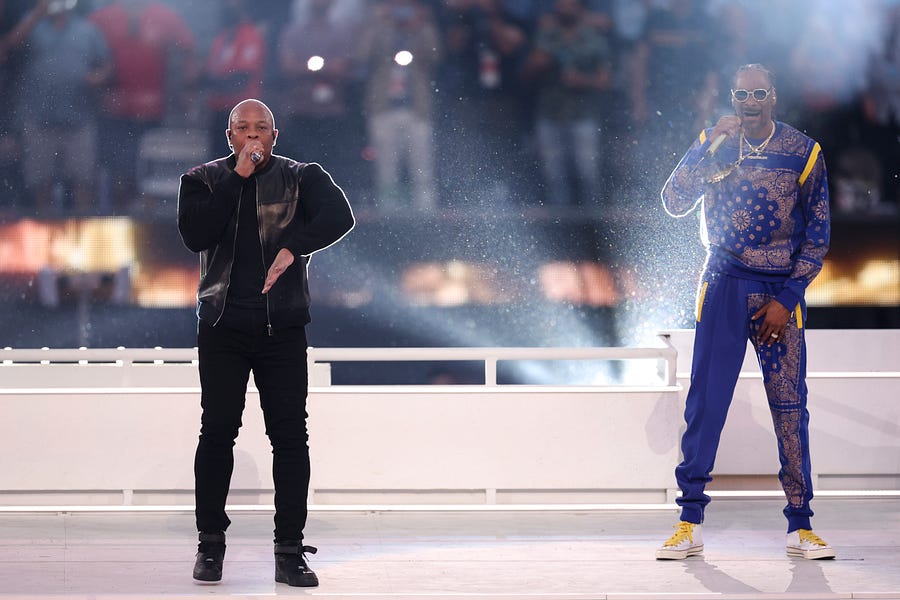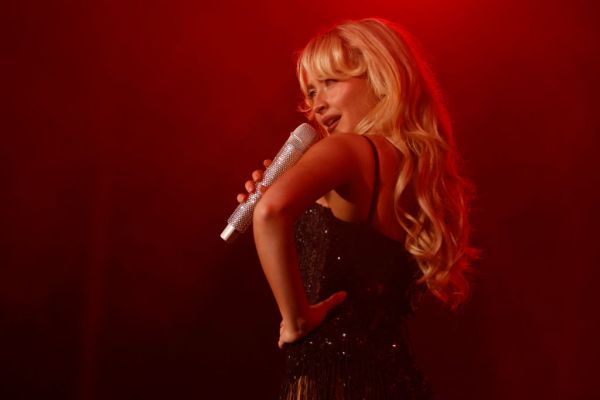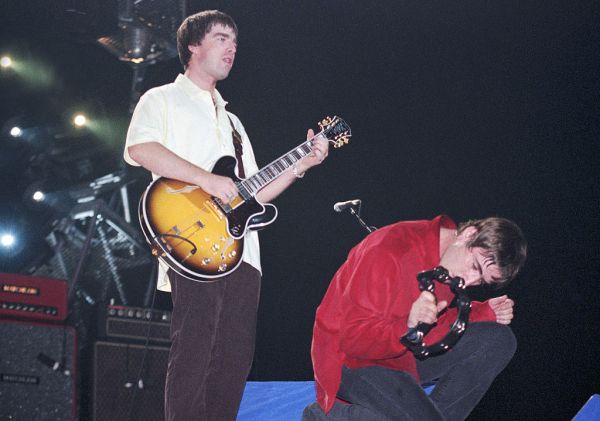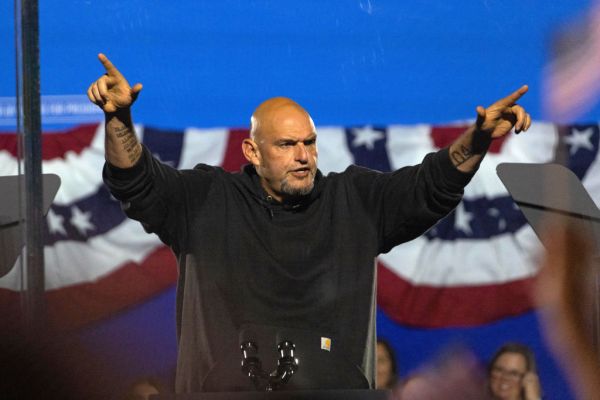2023 is the widely recognized 50th anniversary of hip-hop’s Bronxite birth. Events to celebrate the half-century of hip-hop music and culture are already underway, including Showtime’s three-year multimedia project Hip Hop 50 or Mass Appeal’s The Soundtrack album series, the first installment of which dropped this July. So far, conservatives are notably absent from the conversation, as we are with almost all hip-hop conversations. However, there is still time to show conservatives hip-hop is worth our involvement.
At the half-century mark, hip-hop culture and rap music are still going strong. On August 11, 1973, DJ Kool Herc hosted a “Back to School Jam” in the Bronx introducing new techniques to loop percussion breaks while playing records, and there he gave birth to hip-hop. As renowned conservative poet and critic Dana Gioia said on the Conversations with Tyler podcast, hip-hop was born from the common people’s need for poetry, folk music, and poetic narratives in their lives:
If I go back to 1975 when I was leaving Harvard, I was told by the world experts in poetry that rhyme and meter were dead, narrative was dead in poetry. … The intellectuals in the United States … took poetry away from common people … and the common people reinvented it. The greatest one of these was Kool Herc in the South Bronx, who invented what we now think of as rap and hip-hop. Within about 10 years, it went from non-existent to being the most widely purchased form of popular music. We saw in our own lifetime something akin to Homer, the reinvention of popular oral poetry.
Hip-hop started with those early rappers and their block parties and grew, never receding in popularity or artistic energy—unlike rock ‘n’ roll, for instance, which is always fluctuating, ever dying, and being barely resuscitated. Today, almost every country in the world has a notable hip-hop scene. In America, it has dominated all forms of popular music (although country continues as a necessary parallel), music production, performance art, visual art, beauty, broadcast media, business and marketing, cinema, dance, design, fashion, social media, sports, everything—just review the historical, current, and enduring influences of artists like Rick Rubin, Michael Jackson, Basquiat, Rihanna, Hot 97, Jay-Z, John Singleton, Diddy, etc. The Super Bowl even hosted its first fully hip-hop halftime show earlier this year.
The entirety of the English language has absorbed hip-hop words, phrases, and idioms—“get the bag,” “bling,” “bust a move,” “no cap,” “the drip,” “that’s fire,” “flexing,” “the opps,” etc. These have infiltrated informal speech, of course, but we are beginning to hear some bleed into formal communication as well, heard for example in the speeches of Presidents Obama and Trump—both men who understand hip-hop’s power. In America today, it’s one of the only semi-unifying forces across race, class, and politics. Hip-hop has become one of the most important movements in Western culture.
Why then are conservatives—other than the few like Dana Gioia—so hesitant to engage with hip-hop, if not outright uninterested? It seems to come down to a question of worth. Many, if not most, conservatives simply don’t regard hip-hop as worthwhile. From what I can observe, conservatives (by which I mean primarily American sociopolitical, and especially Christian, conservatives) seem to think the whole of hip-hop culture is inherently opposed to their values, inherently hedonistic, obscene, and profane.
On the incredibly rare occasion a conservative publication engages seriously with hip-hop, you will almost always find disparaging comments, like this one from an essay at National Review: “The only thing worse than rap or hip-hop … is writing about it. Garbage painted pink does not change its nature. This article is the next to last straw in my attention to NRO.” Hip-hop’s conservative haters are not limited to commenters either. The Daily Wire’s Ben Shapiro has infamously stated on numerous occasions that rap music is not real music, and a quick search shows many of his followers agree. Conservative publications rarely discuss hip-hop, other than after incidents such as the notorious but warranted conservative backlash against Cardi B’s and Megan Thee Stallion’s “WAP.”
Could hip-hop actually be worth conservatives’ time? Should they consider it? Absolutely. If a person aspires to be a cultural influence in America, he must understand hip-hop and the gigantic role it plays in contemporary American culture. Like Paul the Apostle using his great knowledge of popular Greco-Roman poetry to connect with his audiences, aspiring culture influencers must know the language of the people. If conservatives cannot properly comprehend this, or, worse, if they do so condescendingly and naively as many pretending progressives do, their mission of influence will fail.
Whether a person enjoys hip-hop art is a matter of taste but anyone can understand hip-hop is the language of our culture. Few artistic movements have ever had such a wide-ranging effect as hip-hop, which, for good and for bad, has changed low, middle, and high art with engagement from people across all social strata.
The most thoughtful and varied cultural conversations occurring today happen in the hip-hop world, especially in rap music. World-changing questions of race, religion, spirituality, economics, philosophy, politics, and more are debated constantly in a popular arena: popular musical art. What other contemporary art form, at this moment, allows these conversations on such a scale?
Conservatives who think the whole of hip-hop culture is opposed to their values hold a shallow view. Hip-hop does, like most contemporary art, skew left, but it is not totally resistant to conservative ideas. If hip-hop does contain some of the lowest things, morally, in pop culture, it contains some of the highest as well. In fact, there is more room in hip-hop for conservatism and resistance to certain elements of American liberalism and progressivism than in other arts scenes today. It can even serve as an immunization against present craziness in a way that other styles of music don’t.
Conservatism in hip-hop is not wholly undiscussed, either. If we read what some liberal publications have had to say, we find interesting perspectives here and there. For example, Okayplayer wrote the condemning “Rap is Still Culturally Conservative to a Fault” last year. After Ice Cube declared a collaboration with the Trump administration, Pop Dust asked, “Is Hip-hop Becoming Conservative?” stating, “News of Ice Cube’s ‘collaboration’ with the Trump administration is shocking and heartbreaking, but it’s also part of a growing trend of rappers preaching semi-conservative rhetoric.” In 2019, The Stranger bemoaned “Aging Hip-hop is Becoming Conservative,” saying:
[Hip-hop is] now more than 40 years old. We can see how it has aged through the years. When it was a child (1978 to 1984), it was all about fighting for your right to party. When it was young (1985 to 1993), it was about fighting the power. During its transition from youth to the middle years, 1994 to 1997, it soberly claimed that cash rules everything around me. In the ’00s, it was about chilling out in the club and smoking blunts. Today, it has become conservative.
In America, Hollywood clearly censors conservative voices. In visual art, any outspoken conservative will find obtaining funding difficult. Few literary writers dare identify as conservative for fear of losing their usually academic jobs. American pop music offers us no significant conservatives (the U.K. has Morrissey and Van Morrison but little else). American rock still has Eric Clapton and Ted Nugent, but rock has next to no influence on today’s youth.
Of course there is Kanye, who supported Trump as president (as, to lesser extents, did others like 50 Cent, Fivio Foreign, Ice Cube, and Lil Wayne), infamously wearing the MAGA hat, but Kanye’s conservatism can be seen even more clearly in stances like his support of the traditional family structure (despite his personal familial failings)—illustrated well in his song and music video “Closed on Sunday”—and in his opposition to abortion in numerous interviews, speeches, and lyrics like “God has said himself to make sure that the baby live” on “Life of the Party.”
Hold the selfies, put the ‘gram away.
Get your family, y’all hold hands and pray.
When you got daughters, always keep ’em safe.
Watch out for vipers, don’t let them indoctrinate. . .
Raise our sons, train them in the faith.
Through temptations, make sure they’re wide awake.
Follow Jesus, listen and obey.
No more livin’ for the culture, we nobody’s slave.
– Kanye West, “Closed on Sunday”
Kanye officially converted to a conservative form of Christianity in 2019, though he had foreshadowed this as early as 2004 in “Jesus Walks” and some saw it coming on 2016’s Life of Pablo in which Kanye used the life of Saint Paul as a guide. After Kanye converted, he released three albums of strictly Christian music (Jesus is King, the gospel Jesus is Born, and the classical Emmanuel), before releasing one of the most impressive and likely-to-last popular albums of the last several years, Donda, which epically illustrates the trials and tribulations of the American Christian life and our culture’s desperate need for salvation, redemption, and community. We may study Donda best beside Kanye’s performance art listening parties (which emphasized beauty and referenced classical themes, especially those of Dante’s The Divine Comedy) and the “Heaven and Hell” music video (which implements Gustave Doré’s Dante engravings and John Martin’s mezzotint The Fall of Babylon.)
To the hustlers, killers, murderers, drug dealers, even the scrippers,
Jesus walks for them!
To the victims of welfare feel we livin’ in Hell here, hell yeah,
Jesus walks for them!
Now, hear ye, hear ye, want to see Thee more clearly,
I know He hear me when my feet get weary!
– Kanye West, “Jesus Walks”
Bruh, I never ever stopped fightin’ for the people.
Actually, wearin’ the hat’ll show people that we equal. . .
See that’s the problem with this damn nation:
All Blacks gotta be Democrats, man;
We ain’t made it off the plantation.
– Kanye West and T.I., “Ye vs. the People”
Some will call Kanye little more than an approximately conservative outlier in the rap and hip-hop world, and of course he is an outlier: one of the greatest American pop artists, in the company of Elvis, Aretha Franklin, James Brown, Bob Dylan, Michael Jackson, Prince, etc. Yet Kanye does not stand alone in embracing certain conservative or conservative-adjacent ideals.
Consider comments from National Review’s Armond White—the only conservative critic consistently publishing hip-hop criticism—on the famous Atlanta trap group Migos. Armond says Migos work alongside hip-hop artists such as De La Soul, The Geto Boys, Kanye West, and Public Enemy to “epitomize the range of black political thinking and social experience” and contradict “mainstream media’s overall intention to make a monolith of black political thought.”
“Walk It Talk It” brims with braggadocio, sure, but it also advocates empathy—“Take my shoes and walk a mile,/Something that you can’t do!”—and, as many rappers have done, warns against selling out for respect and fame—“Heard you signed your life for that brand new chain,/Think it came with stripes, but you ain’t straight with the gang.”
Examine Public Enemy’s “Can’t Truss It,” which gets more explicit than Migos in warning against selling out to the pretend sympathetic Democrats, with: “Beware of the hand when it’s comin’ from the Left. . ./Can’t truss it!” Chuck D said of these lyrics, “Sometimes when people come and want to color themselves liberal or Democrat, they think they are in your best interest. You gotta keep your stance, because you never know where that hand is coming from.” Or as Second Amendment advocate Killer Mike put it on Run the Jewels’ “Goonies vs. E.T.”: “Used to be a time I’d see it and not say it,/Now I understand that woke folk be playin’.”
This nonconformist caution continues today in rising stars like Baby Keem, who recently rapped:
I gotta see the hope, be the way.
I gotta free the folks where I lay.
I gotta show the light to the weak,
Dodgin’ the fake woke in L.A.
– Don Toliver and Baby Keem, “Outerspace”
Baby Keem seems to be mirroring his more established cousin Kendrick Lamar, who has also displayed some rebel reserve from time to time. Kendrick recently rapped:
I been duckin’ the pandemic,
I been duckin’ social gimmicks,
I been duckin’ overnight activists, yeah!
I’m not a trending topic.
– Baby Keem and Kendrick Lamar, “Family Ties”
The Geto Boys were fierce defenders of their intellectual freedom too. In 1992, the Geto Boys’ Willie D released “Rodney K” to condemn what he saw as the late Rodney King’s appeasement to the patronizing media, as Armond White discusses in an essay from his book The Resistance. Kanye isn’t the only rapper who has opposed abortion, either. On The Geto Boys’ “The Unseen,” the Texans railed against the widespread legalization of abortion and the suppression of anti-abortion protests and pro-life thought, after which their song transitioned into a direct call for men to take responsibility for their children:
Legalizing abortion, ain’t that a b—-. . .
You might as well take up guns and point ‘em at babies. . .
And take the rep for the murder you did, you son of a b—-. . .
At least give the kids a chance. . .
What the f— is this protestin’?
Legalizing killing babies and s— with no question?
Police beatin’ up the priests, Scotty,
‘Cause they were prayin’ for the unseen dead bodies. . .
But they won’t stop it ‘cause everybody’s in it for a profit,
Politicians lookin’ at their pockets,
And this s— is senseless,
People gettin’ whipped due to this baby killing business.
We need to get a grip and chill
And stop sending our unseen to the killing field. . .
And you know what Big Mike?
We gotta talk about these —— who, you know,
Let these girls go through this s— though, right. . .
For goin’ in the murder, he never meant to hurt her,
But now she had the baby, all he did was desert her.
Although the condemnation of abortion is unusual in hip-hop beyond Kanye and The Geto Boys (while basically absent from pop music as a whole), the admonition for men to grow up and take responsibility, to tend to one’s duties, is not. While pop music tempts young people with staying forever young and feeds them cotton candy nostalgia, rap takes the opposite route, often referencing 1 Corinthians 13:11, saying things like:
My dad always said it’s easier to keep up
Than it is to catch up, but all I did was mess up. . .
You not a kid no more, I think it’s time to grow,
Homie, you better know, you know, it’s time to grow . . .
‘Cause, —–, you too grown, get out and get your own.
Your childish ways are gone, I think you better grow up!
– Bishop Lamont, “Grow Up (Prod. by Dr. Dre)”
This year, Kendrick Lamar said on “Father Time”:
My n—– ain’t got no daddy, grow up overcompensatin’,
Learn s— ’bout bein’ a man and disguise it as bein’ gangsta.
I love my father for tellin’ me to take off the gloves,
‘Cause everything he didn’t want was everything I was,
And to my partners that figured it out without a father,
I salute you, may your blessings be neutral to your toddlers.
It’s crucial, they can’t stop us if we see the mistakes.
‘Til then, let’s give the women a break.
Lamar went past this stage of growing up as well, 13 years before on “She Needs Me,” in finding the right partner, with a verse that recalls Proverbs 31’s virtuous woman:
She go to work, she go to school,
Her body smooth, no tattoos,
Type of girl that’ll make your mother feel comfortable;
My pops love her too.
She’s compatible, she’s independent,
She handle her business,
She believe in God and no other religions,
She’s never in competition.
When it comes to her friends, she’s dependable.
She set her own trends.
A confidant, a mediator,
So sweet, every flavor.
Just a conversation with her doing you a favor. . .
Conservative, affirmative. . .
The beauty of her, swear to God, a blind man can see,
A true queen, and she needs me. . .
I need her; we need we.
This is the kind of woman you can imagine giving Kendrick the Missy Elliott “One Minute Man” line, “Here’s your chance, be a man, take my hand, understand.”
I want to emphasize that I have chosen popular rap songs as illustrations here, nothing niche. These are songs hip-hop fans have found worth their time, pleasurable, and fun. (If you want to listen to some of the songs I have referenced, you may check out the accompanying playlist I created while writing this essay, at YouTube or at Spotify.) I have not made much effort to appeal to the pleasure of listening to these rap songs, because hip-hop is integral to our culture regardless of whether you enjoy it, but it is important to note people do enjoy these songs, and that enjoyment builds a stage upon which important cultural conversations can be had, and are, often with the benefit of being illustrative rather than didactic.
When I first had this realization, hip-hop was a gigantic blind spot for me. I grew up enjoying and playing bluegrass, folk, and gospel music. Even so, once I discovered the breadth of conversations happening in hip-hop, my best point of entry was Kanye West, along with Armond White’s criticism available online and in his books like The Resistance and Rebel for the Hell of It.
For a hip-hop beginner, Kanye is a great place to start, because he is probably the most important popular artist of the 21st century, and because he has always absorbed the entire history of hip-hop, soul, R&B, etc., past and present, producing art that reflects this while also being intensely personal (Kanye is always simultaneously braggadocious and vulnerable), much like Bob Dylan did with folk and blues music in the ‘60s forward, or, on a lesser scale, like my childhood hero Ricky Skaggs did with bluegrass.
Another great series of albums for a conservative rap novice is Kendrick Lamar’s first four: The Kendrick Lamar EP; Section.80; Good Kid, M.A.A.D. City; and To Pimp a Butterfly (even jazz and classical music critic Ted Gioia could not resist the latter). Those four albums have a lot to sink one’s teeth into. Pay special attention to the way the themes of race, religion, and the desperation for role models play out.
When I was a kid, people would often say, “I love all music! Well, except for country and rap.” Now, amid our nation’s cultural civil war, country and rap might as well be the only genres. As much as I love the genres of blues, bluegrass, metal, and rock, these have not maintained their cultural potency like country and rap have. Country music may fade soon if its fans do not seek to maintain it, as Paul Brian discusses in “No Country for Young Men.” On the opposite end of the spectrum, rap music does know what it is about and is mostly avoiding the pitfalls where country is currently stumbling, where all those other genres have already fallen.
Conservatives who care about culture must care about hip-hop, or at least respect it. While much of rap is indeed vulgar—and that’s a major roadblock—I hope I have shown there is ample room in hip-hop for conservatism, and I hope, in the future, more conservatives will appreciate the vibrancy, vitality, and potential of this musical culture. I see hip-hop’s ability to speak, and I can see it will continue. I want other conservatives to see hip-hop as worth their attention too, because it is all around us. It cannot be ignored, so, as Socrates says in Book IV of The Republic, “Our guardians must lay the foundations of their fortress in music.” If there is good to be found within hip-hop, and there is, we should pursue and encourage that good.








Please note that we at The Dispatch hold ourselves, our work, and our commenters to a higher standard than other places on the internet. We welcome comments that foster genuine debate or discussion—including comments critical of us or our work—but responses that include ad hominem attacks on fellow Dispatch members or are intended to stoke fear and anger may be moderated.
You are currently using a limited time guest pass and do not have access to commenting. Consider subscribing to join the conversation.
With your membership, you only have the ability to comment on The Morning Dispatch articles. Consider upgrading to join the conversation everywhere.